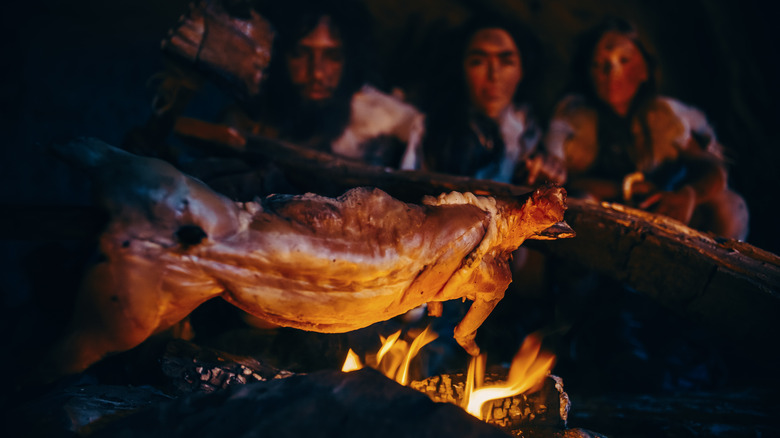How Cavemen Developed 1 Of The First Food Preservation Methods
Smoking is as near to being a universal food preparation method as you can get. But when did we develop this method?
According to Off the Grid News, the indigenous tribes of the northwest and extreme north deployed smoking techniques to ensure their fish supplies would last throughout the winter. They did this by exposing the salmon directly to smoke for up to two or three days. Similarly, The Fish Site explains that hieroglyphics attest to the existence of smoke-dried fish in Africa for at least 5000 years. And again, Finnan haddie, which is haddock smoked in the Scottish town of Findon, burst into the rest of Britain in the 1800s (per Bangor Daily News). Zhangcha duck, which Taste Atlas describes as Sichuan smoked duck, is another smoked dish that originates in Asia. With smoking practices scattered around the globe, it is only natural to presuppose they were developed tens of thousands of years ago.
How would it have been discovered?
We don't know who first thought of smoking meat. After all, there aren't any records. So, most accounts of the history of smoking follow the manner of Michigan State University, which simply states smoking dates back to prehistory and was one of the first methods used to preserve food. That, however, is not much of an answer about how it might have happened.
Fortunately, the British chef and cookbook writer Delia Smith described a plausible situation to The Herald in 2002. "Most probably early man hung his food in the rafters of his house to prevent animals and rodents eating it," she explained. "As there were no such thing as chimneys, primitive homes could get smoky. Somebody would be bound to notice that the pieces of food exposed to smoke remained in better condition and tasted better." Basically, the solution to one issue caused people to stumble upon a new method of cooking. As Chad's BBQ adds, later generations would develop the accident into an intentional technique with the introduction of brining, sprinkling salt, and altering types of wood to bring out different flavors in the smoked meat.

